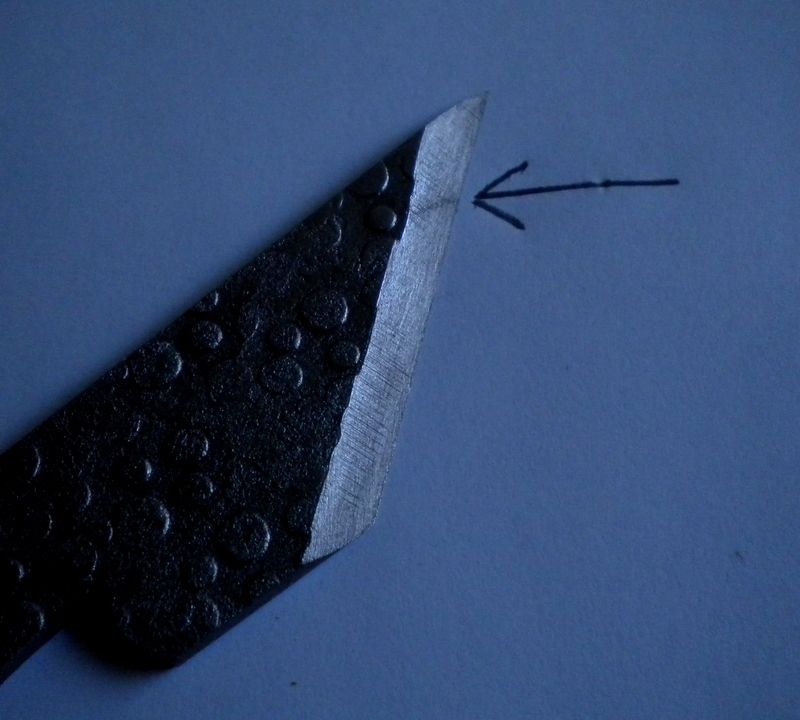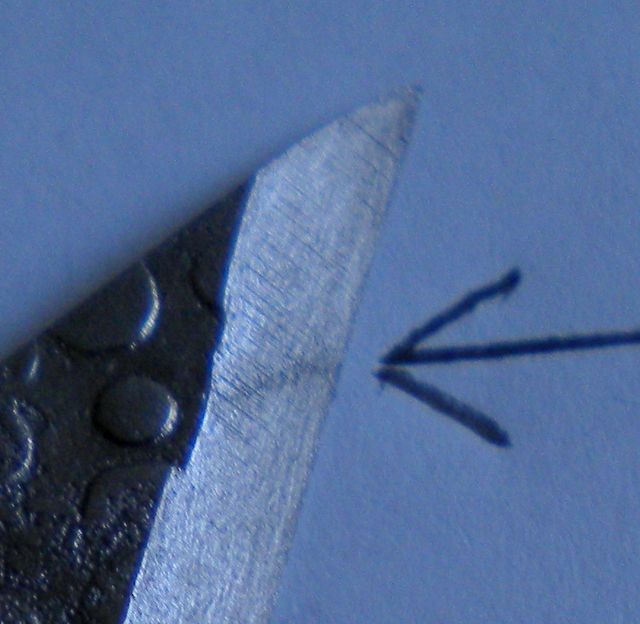me2, if you are referring to the stringer, I don't think it's a carbide. I did do a full normalization after the texture was hot forged in and also did some of the stock reduction on the bevel with a file. It’s also quite long and runs back over an inch into the blade, which you can’t see in the pic. I’ve seen this type of thing in 1095 and other steels from numerous reputable suppliers many times. It’s really not that uncommon. Some is a little “cleaner” than others, but figure it’s just somewhat typical with certain of types of steel. For that matter, virtually all steel has flaws and inclusions to varying degrees. Even the so called “clean” steels have them, they are just smaller and fewer. I think it is safer to assume that this can be a problem with any steel and that the flaws exist in the worst possible locations, than it is to assume that any steel is perfectly clean and homogenous.
The lesson I'm taking home is that it would have been better to take the time, modify my technique and forge the point so that the grain flow follows the profile of the edge, from now on, which would have been theoretically better from a structural stand point regardless of the stringer…
... and start using the brass rod test again just in case.
(On thicker stock I generally do forge the point, but need to change the way I’m doing the thin stock on these kiridashis etc. I think what I’ll do is hot cut them at an angle from the back side and then forge the tip or point back up from the edge side. This will basically, push the cut portion to the spine and get the grain flow to run parallel to the edge.)



